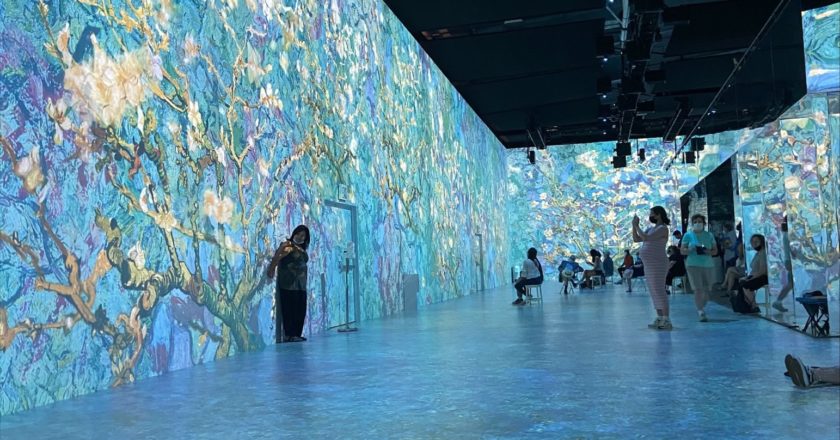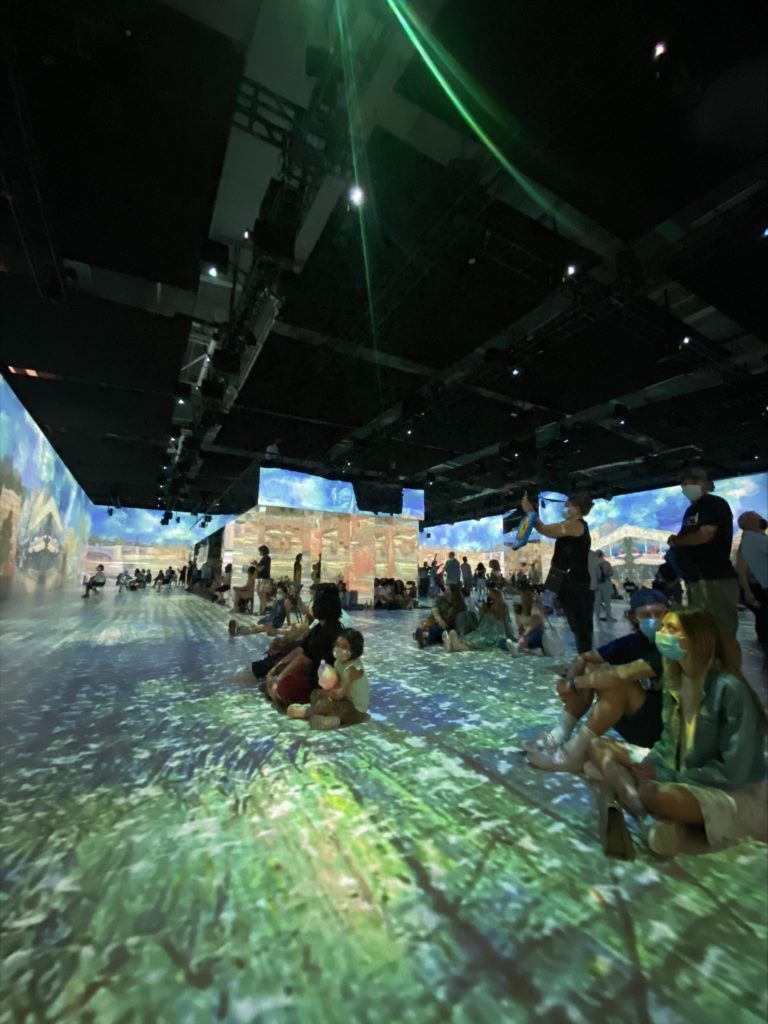Just last week I took the time to release my “ Internalized Pandemic Anxiety” and visit the new Immersive Van Gogh Exhibit at Pier 36 in NYC. The exhibit presents a lavish and unique perspective of Van Gogh and his art through movement and sound. The goal of the project is to immerse the viewer in the artistic process of the elusive Vincent Van Gogh. The art of Van Gogh allows a creative gateway for the connoisseur to examine the inner workings of a genius. The exhibit itself is held in a series of large rooms with 500,000 cubic feet of projectors; thus immersing the viewer in an extrasensory display of moving pictures. Within the dark rooms, a splash of color appears, illuminating the artist’s work. As the mix of classical music builds to a crescendo, famous pieces of art surround the viewer from all angles.
My personal leading question going into the exhibit was whether or not I would depart with a better understanding of Van Gogh’s creative process behind his art. Initially being in the exhibit I wasn’t fully confident I would be able to grasp any aspect of the inner workings of some of the most famous art in the world; I was proven wrong. The art truly came to life before my eyes, and as it did, I was able to piece together the different parts of Van Gogh’s life. One of the most eye catching moments of this exhibit was witnessing his art style develop and adapt from his first works and to more famous ends of the spectrum, later in life. The art became more lively, for one, but also reflected the different struggles Van Gogh endured and how those shifted his perception of the world.
His iconic piece “Starry Night” was completed during his stay in the Saint Paul asylum. He lived in the asylum for a year following his psychological collapse and mutilation of his left ear. Personally, the painting represented a specific ‘longing’ Van Gogh had dealt with his entire life. Struggling with depression in the 19th century, there was little for him to do in terms of recovery and treatment. “Starry Night” represents his ideas of the world outside his window, the world just outside his grasp. Though Van Gogh checked himself into Saint Paul’s and was allowed to leave anytime he pleased, his perception of the whimsicality and passion of the world illuminates his longing for the mental torment to cease.
To answer my driving questions, my personal feelings towards Van Gogh changed more than my understanding of his art. Though I did feel a certain level of understanding of his creative process, I felt more connected to his mental state at the time. With all the sensory experiences combined, the exhibit is able to extort a sense of empathy from the viewer. I certainly understood better what he had suffered with and how it changed his view of the world. Although I gained insight into Van Gogh and his art, it is impossible to speak for everyone. Due to our unique human experiences we all understand art individual to our stories. Every interpretation holds a multitude of truths to Van Gogh as well as the beholder.
Do I think it’s worth it to visit the exhibit? Most definitely. Even for $30, every second is worth the experience and the lasting impression on the viewer is priceless.




My relatives every time saay that I am wasting my time here at web,
except I know I am getting familiarity daily by eading such fastidious articles. https://Lvivforum.PP.Ua/